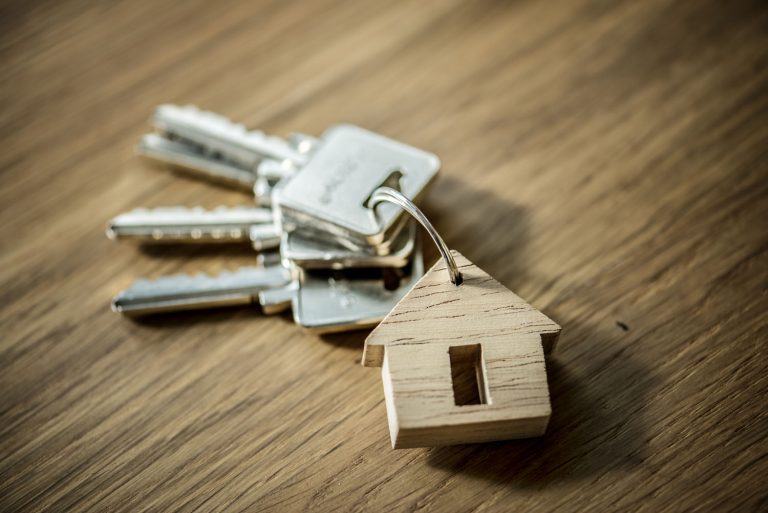Buying or selling a property is an exciting yet often stressful process, and one of the most important aspects of this journey is conveyancing. Conveyancing is the legal process of transferring property ownership from one person to another. It ensures that the title is clear, all legal obligations are met, and the transaction complies with current property law. Understanding how much conveyancing costs is crucial because it allows you to budget effectively and avoid any unexpected financial surprises during the sale or purchase of a property. In this guide, we will break down all aspects of conveyancing costs, including legal fees, additional expenses, and factors that can affect the overall cost. This will give you a clear picture of what to expect and how to manage your finances throughout the property transaction process.
Part 1: Understanding Conveyancing Costs
When considering conveyancing costs, it is important to understand what these fees cover and how they are calculated. Conveyancing fees generally consist of two main components: the legal fees charged by your solicitor or licensed conveyancer, and disbursements, which are additional expenses incurred during the legal process.
Legal Fees
Legal fees are the charges applied by your solicitor or conveyancer for their professional services in handling the property transaction. This includes tasks such as reviewing contracts, conducting searches, liaising with the other party’s solicitor, and ensuring that all aspects of the transaction comply with property law. Legal fees can vary depending on the complexity of the transaction, the value of the property, and whether it involves standard freehold or more complex leasehold arrangements. On average, legal fees for a typical property purchase may range from £850 to £1,500, while selling a property might cost between £610 and £950.
Disbursements
Disbursements are costs paid to third parties on your behalf to ensure the legal process is completed properly. These can include fees for searches to check the local area and environmental risks, Land Registry registration fees, and Stamp Duty Land Tax if applicable. Disbursements can also cover costs for obtaining official copies of title deeds, checking local planning permissions, or conducting additional legal checks for unique property situations. Although disbursements are usually smaller than legal fees, they are an essential part of the total cost and should be factored into your budget.
Factors Affecting Conveyancing Costs
Several factors can influence the overall cost of conveyancing. These include:
- Property Value: Higher-value properties may require more thorough checks and additional documentation, which can increase the overall cost.
- Property Type: Leasehold properties often incur higher conveyancing costs than freehold properties due to the additional legal complexities involved.
- Location: Conveyancing fees can vary by region. Properties in urban areas with high demand or in complex legal jurisdictions may be more expensive to convey.
- Transaction Complexity: Situations involving shared ownership, unregistered land, new builds, or unique property issues often require additional legal work, raising the cost of conveyancing.
Typical Conveyancing Costs in the UK
For buyers, the overall conveyancing costs including legal fees and disbursements usually fall between £850 and £1,500, depending on property value and complexity. For sellers, the total conveyancing cost is often slightly lower, generally ranging from £610 to £950. Leasehold properties, due to the added legal requirements, can push costs higher, sometimes reaching £1,500 to £1,800. These figures provide a useful guideline, although individual circumstances will always influence the final amount.
Additional Costs to Consider
Beyond basic legal fees and disbursements, there are other expenses that can impact the total cost of moving property:
- Stamp Duty Land Tax (SDLT): This is a government tax on property purchases over a certain threshold. The exact amount depends on the purchase price and whether the buyer qualifies for exemptions or reliefs.
- Property Surveys and Valuations: Obtaining a survey is important to ensure the property is structurally sound and to identify potential issues. Survey costs vary depending on the level of inspection, from a basic condition report to a full structural survey.
- Removal Costs: Expenses associated with moving personal belongings to a new property should also be factored into your budget.
Managing Conveyancing Costs Effectively
There are several strategies to manage and potentially reduce conveyancing costs:
- Obtain Multiple Quotes: Compare fees from several solicitors or licensed conveyancers to find competitive rates and understand what is included in each quote.
- Check for Hidden Fees: Make sure the quote includes all potential charges, so there are no surprises during the process.
- Consider Online Conveyancers: Online services often offer competitive rates due to lower overheads, while still providing professional and legally compliant service.
- Plan Ahead: Starting the conveyancing process early allows more time to handle issues as they arise, preventing rushed decisions that could incur extra costs.
By understanding what makes up conveyancing costs and the factors that influence them, buyers and sellers can plan effectively and make informed decisions. Knowing the typical ranges, what to expect, and how to manage expenses helps ensure that the property transaction process is smoother, less stressful, and financially manageable.
Part 2: Comparing Quotes and Choosing the Right Conveyancer
After understanding the typical conveyancing costs, the next step is choosing the right conveyancer for your property transaction. Selecting a competent, reliable, and reasonably priced solicitor or licensed conveyancer is crucial for ensuring the process goes smoothly. This part explores how to compare quotes, evaluate services, and make informed decisions.
Step 1: Gathering Multiple Quotes
One of the most effective ways to understand conveyancing costs and ensure competitive pricing is to obtain multiple quotes. You should aim to get at least three different quotes from solicitors or conveyancing firms. When gathering quotes, be sure to ask for a detailed breakdown of:
- Legal fees: the core cost of handling your transaction.
- Disbursements: expected costs for searches, registration, and taxes.
- Additional charges: potential fees for complex cases, such as dealing with leasehold properties or unusual legal circumstances.
Having multiple quotes allows you to compare not only the price but also the range of services provided, helping you make a more informed choice.
Step 2: Understanding the Difference Between Fixed Fees and Hourly Rates
Some conveyancers charge a fixed fee, while others charge by the hour. Fixed fees provide certainty, as you know upfront how much you will pay, making budgeting easier. Hourly rates can sometimes be higher, particularly if complications arise, but they may be justified for more complex transactions. Understanding how each conveyancer structures their fees is essential to avoid unexpected costs later in the process.
Step 3: Evaluating Experience and Specialisation
Not all conveyancers have the same level of expertise. Consider the following when evaluating potential providers:
- Experience with Property Type: Some conveyancers specialise in leasehold properties, new builds, or high-value homes, which may be relevant to your transaction.
- Knowledge of Local Area: Conveyancers familiar with the local property market and local authority processes can navigate searches and legal requirements more efficiently.
- Reputation and Reviews: Online reviews, testimonials, and referrals from friends or family can provide insight into reliability, professionalism, and customer service.
Choosing a conveyancer with the right expertise can save time, reduce errors, and prevent delays, ultimately keeping costs under control.
Step 4: Considering Online Conveyancing Services
Online conveyancers have become increasingly popular for property transactions. These services often offer lower fees than traditional solicitors because they operate with lower overheads. While online conveyancers can handle most standard transactions efficiently, it’s important to ensure that they are fully qualified, regulated, and provide clear communication throughout the process. For straightforward purchases or sales, online conveyancers can be a cost-effective option.
Step 5: Checking for Hidden Fees and Extra Charges
Some quotes may appear cheaper at first glance but include hidden fees for things like additional searches, priority processing, or dealing with complex legal issues. Always request a full breakdown and ask the conveyancer to clarify any ambiguous charges. This ensures there are no surprises and allows you to compare quotes accurately.
Step 6: Using Conveyancing Quotes to Manage Your Budget
Once you have multiple quotes, it’s helpful to map out a realistic budget for your property transaction. Include legal fees, disbursements, Stamp Duty Land Tax, surveys, and moving costs. Understanding the total expected outlay ensures you are financially prepared and helps avoid unnecessary stress during the buying or selling process.
Step 7: Making Your Decision
Selecting the right conveyancer is not just about price; it’s also about confidence, reliability, and communication. Choose a conveyancer who:
- Clearly explains the process and fees.
- Has experience with properties similar to yours.
- Offers responsive communication and updates throughout the transaction.
- Provides transparent, itemised quotes.
By carefully comparing quotes, checking qualifications and experience, and understanding fee structures, you can make an informed choice that ensures a smooth and cost-effective property transaction.
Part 3: Completing the Transaction and Minimising Conveyancing Costs
Once you have chosen your conveyancer and agreed on the fees, the next step is managing the completion of your property transaction efficiently while keeping costs under control. This part explores the final stages of conveyancing, how to avoid common delays, and strategies to minimise total expenses.
Step 1: Understanding the Completion Process
Completion is the stage when ownership of the property officially transfers from the seller to the buyer. During this process, your conveyancer will:
- Finalise legal documents and contracts.
- Ensure all searches and checks are complete.
- Arrange for the payment of Stamp Duty Land Tax if applicable.
- Register the property with the Land Registry in the buyer’s name.
- Handle the transfer of funds between buyer and seller.
Knowing the steps involved helps you anticipate the timeline and avoid surprises that could increase costs.
Step 2: Avoiding Common Delays
Delays in conveyancing can lead to extra costs, especially if deadlines are missed or extended. To avoid this:
- Provide all required documents promptly, such as identification, mortgage details, and signed contracts.
- Respond quickly to requests from your conveyancer for additional information or clarifications.
- Schedule surveys and inspections early to prevent last-minute complications.
- Maintain regular communication with your conveyancer to monitor progress and address potential issues.
Being proactive reduces the risk of delays, which can otherwise result in higher legal fees or additional administrative charges.
Step 3: Minimising Costs During Conveyancing
While some conveyancing costs are unavoidable, there are strategies to manage and potentially reduce expenses:
- Choose a Fixed Fee Conveyancer: This gives certainty about costs, reducing the risk of unexpected charges.
- Bundle Services Where Possible: Some conveyancers offer combined packages for legal fees and disbursements, which can be more cost-effective.
- Avoid Unnecessary Extras: Only request searches, surveys, or services that are truly necessary for your transaction.
- Plan Your Move Efficiently: Coordinating completion dates with moving services and mortgage release dates prevents overlapping charges and late fees.
Step 4: Preparing Financially for Completion
It is essential to budget accurately for completion day. Ensure you have:
- Funds available for legal fees, disbursements, and Stamp Duty Land Tax.
- A clear understanding of the mortgage payout process, if applicable.
- Arrangements in place for transferring remaining funds and collecting the keys on completion.
Being financially prepared prevents last-minute borrowing or delays, which could add extra cost.
Step 5: Ensuring a Smooth Handover
On the day of completion, your conveyancer will coordinate the transfer of ownership and funds. Ensuring all parties are ready and aware of the process will make the handover seamless. After completion, your conveyancer will handle the final registration with the Land Registry and provide you with confirmation that the transaction is legally complete.
Conclusion: Navigating Conveyancing Costs Successfully
Conveyancing is a crucial component of any property transaction. By understanding the typical costs, obtaining multiple quotes, choosing the right conveyancer, and managing the completion process carefully, you can ensure that your conveyancing experience is smooth, efficient, and financially manageable. Planning ahead, being proactive, and staying informed throughout the process allows you to minimise costs and avoid unnecessary stress. Ultimately, knowing what to expect and how to manage fees gives you confidence as you move into your new property or complete the sale of your existing home.




